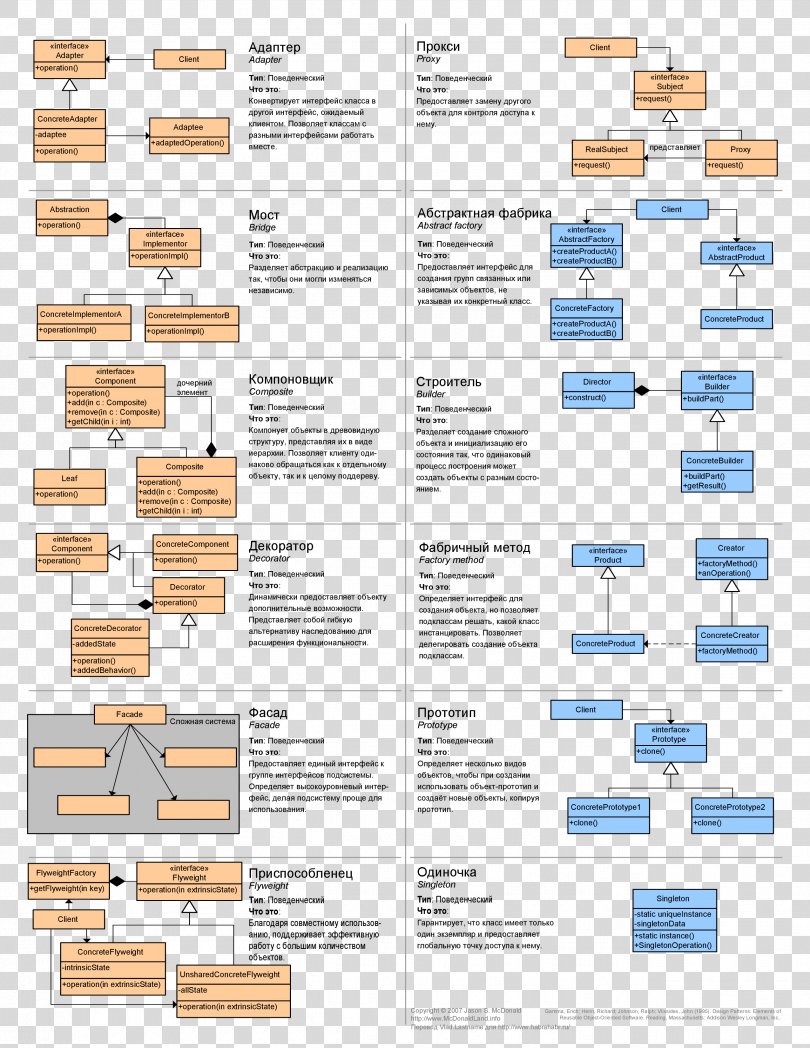Table Of Content
The interpreter pattern is used to define the grammar for instructions that form part of a language or notation, whilst allowing the grammar to be easily extended. The flyweight pattern is used to reduce the memory and resource usage for complex models containing many hundreds, thousands or hundreds of thousands of similar objects. The prototype pattern is used to instantiate a new object by copying all of the properties of an existing object, creating an independent clone.
References
Patterns are more like receipts – they point you to right direction but they don’t guarantee that they are the solution you are looking for. Same way you use receipts in cooking book – you know what you want, book gives just points you to right direction and it is up to you to get there. The state pattern is used to alter the behaviour of an object as its internal state changes. The pattern allows the class for an object to apparently change at run-time.

Interface for Processes
N2 - Capturing a wealth of experience about the design of object-oriented software, four top-notch designers present a catalog of simple and succinct solutions to commonly occurring design problems. Each pattern describes the circumstances in which it is applicable, when it can be applied in view of other design constraints, and the consequences and trade-offs of using the pattern within a larger design. Patterns allow designers to create more flexible, elegant, and ultimately reusable designs without having to rediscover the design solutions themselves.
Gunnar Peipman – Programming Blog
Essential Knockout.js, Part 1 - Visual Studio Magazine
Essential Knockout.js, Part 1.
Posted: Mon, 08 Jul 2013 07:00:00 GMT [source]
AB - Capturing a wealth of experience about the design of object-oriented software, four top-notch designers present a catalog of simple and succinct solutions to commonly occurring design problems. They then go on to systematically name, explain, evaluate, and catalog recurring designs in object-oriented systems. All patterns are compiled from real systems and are based on real-world examples. Each pattern also includes code that demonstrates how it may be implemented in object-oriented programming languages like C++ or Smalltalk.
About O’Reilly
Creational patterns are ones that create objects, rather than having to instantiate objects directly. This gives the program more flexibility in deciding which objects need to be created for a given case. The proxy pattern is used to provide a surrogate or placeholder object, which references an underlying object. The proxy provides the same public interface as the underlying subject class, adding a level of indirection by accepting requests from a client object and passing these to the real subject object as necessary. The authors employ the term 'toolkit' where others might today use 'class library', as in C# or Java.
When this book was published first it was revolutionary because it contained still undocumented knowledge from software development field that needed some systematic work and organization on it. Today we see these patterns in many programs and developers on different platforms are more and more aware of these first defined design patterns. Designing object-oriented software is hard, and designing reusable object-oriented software is even harder. You must find pertinent objects, factor them into classes at the right granularity, define class interfaces and inheritance hierarchies, and establish key relationships among them. Your design should be specific to the problem at hand but also general enough to address future problems and requirements. Experienced object-oriented designers will tell you that a reusable and flexible design is difficult if not impossible to get “right” the first time.
Search code, repositories, users, issues, pull requests...

Sometimes acquaintance is called 'association' or the 'using' relationship. Acquaintance objects may request operations of each other, but they are not responsible for each other. Acquaintance is a weaker relationship than aggregation and suggests much looser coupling between objects, which can often be desirable for maximum maintainability in designs. They warn that the implementation of a subclass can become so bound up with the implementation of its parent class that any change in the parent's implementation will force the subclass to change. Furthermore, they claim that a way to avoid this is to inherit only from abstract classes—but then, they point out that there is minimal code reuse. Use of an interface also leads to dynamic binding and polymorphism, which are central features of object-oriented programming.
Before a design is finished, they usually try to reuse it several times, modifying it each time. The design patterns require neither unusual language features nor amazing programming tricks with which to astound your friends and managers. All can be implemented in standard object-oriented languages, though they might take a little more work than ad hoc solutions. But the extra effort invariably pays dividends in increased flexibility and reusability. The authors begin by describing what patterns are and how they can help you design object-oriented software. With Design Patterns as your guide, you will learn how these important patterns fit into the software development process, and how you can leverage them to solve your own design problems most efficiently.
A singleton class ensures that only one instance of the class can be created. The pattern is often called an anti-pattern because it may lead to high coupling of components. The mediator pattern is used to reduce coupling between classes that communicate with each other. Instead of classes communicating directly, and thus requiring knowledge of their implementation, the classes send messages via a mediator object. The chain of responsibility pattern is a design pattern that defines a linked list of handlers, each of which is able to process requests.
Project Ticino: Microsoft's Erich Gamma on Visual Studio Code past, present, and future - The Register
Project Ticino: Microsoft's Erich Gamma on Visual Studio Code past, present, and future.
Posted: Thu, 28 Jan 2021 08:00:00 GMT [source]
Design Patterns was the first book that gathered together and defined solutions in the form of patterns to most common problems in technical design of software. Patterns in this book are used today in almost every program and API to keep code clean, testable and manageable. We don't consider this collection of design patterns complete and static; it's more a recording of our current thoughts on design. We welcome comments on it, whether criticisms of our examples, references and known uses we've missed, or design patterns we should have included. You can write us care of Addison-Wesley, or send electronic mail to design- You can also obtain softcopy for the code in the Sample Code sections by sending the message 'send design pattern source' to design-patterns- You can write us care of Addison-Wesley, or send electronic mail to design- You can also obtain softcopy for the code in the Sample Code sections by sending the message "send design pattern source" to design-patterns-
Highly influential, Design Patterns is a modern classic that introduces what patterns are and how they can help you design object-oriented software and provides a catalog of simple solutions for those already programming in at last one object-oriented programming language. It's a book of design patterns that describes simple and elegant solutions to specific problems in object-oriented software design. Design patterns capture solutions that have developed and evolved over time.
In their parlance, toolkits are the object-oriented equivalent of subroutine libraries, whereas a 'framework' is a set of cooperating classes that make up a reusable design for a specific class of software. They state that applications are hard to design, toolkits are harder, and frameworks are the hardest to design. The authors further distinguish between 'Aggregation', where one object 'has' or 'is part of' another object (implying that an aggregate object and its owner have identical lifetimes) and acquaintance, where one object merely 'knows of' another object.
The clients can access and use individual objects and compositions in the same manner. The authors also discuss so-called parameterized types, which are also known as generics (Ada, Eiffel, Java, C#, VB.NET, and Delphi) or templates (C++). These allow any type to be defined without specifying all the other types it uses—the unspecified types are supplied as 'parameters' at the point of use.


No comments:
Post a Comment